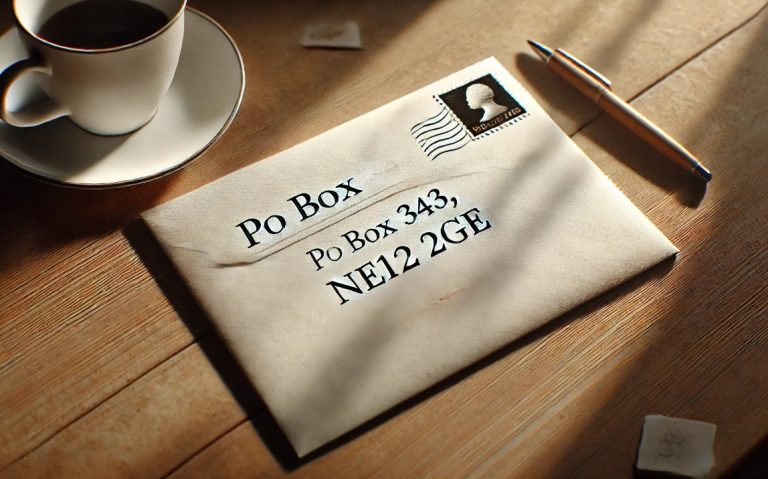Creditors Voluntary Liquidation (CVL) is a formal insolvency procedure designed to help companies resolve unmanageable debts while complying with UK laws.
When a business becomes insolvent unable to meet its financial obligations, it faces a tough decision. CVL allows directors to take proactive steps toward closure while ensuring creditors’ interests are considered.
This blog explores CVL, its process, advantages, disadvantages, and comparisons to other forms of liquidation. By understanding CVL, you can make informed decisions for your business, whether you’re a director seeking options or a creditor aiming to recover debts.
What is Creditors Voluntary Liquidation (CVL)?

Creditors Voluntary Liquidation is a process initiated by directors when a company is insolvent and unable to pay its debts.
It is a voluntary action designed to wind up the company’s affairs in an orderly manner, ensuring creditors receive any remaining assets after liquidation costs are covered.
Unlike compulsory liquidation, CVL is not forced by the court. Instead, directors, with the assistance of an insolvency practitioner, initiate the process.
This makes it a proactive approach that allows the company to address its financial challenges without escalating legal consequences.
In Creditors Voluntary Liquidation:
- Directors admit insolvency and cease trading to avoid worsening the financial position.
- An insolvency practitioner is appointed to manage asset distribution.
- Creditors’ claims are reviewed and prioritised based on UK insolvency laws.
CVL aims to provide a structured and fair resolution, balancing the interests of creditors, directors, and employees.
How Does Creditors Voluntary Liquidation Work?
A Creditors Voluntary Liquidation (CVL) is a structured method used to close an insolvent business in the UK. It begins with an assessment of insolvency, where directors, typically with the aid of an insolvency practitioner (IP), confirm the company’s inability to meet its debts.
Upon confirmation, all trading ceases to prevent further liabilities. The IP is then appointed under the Insolvency Act 1986 to manage the liquidation, ensuring transparency and fairness throughout the process.
The CVL includes preparing detailed financial statements, holding a creditors’ meeting for approval and review, and realising assets to repay debts in a statutory order.
Although asset realization aims to maximize returns to creditors, often, there remains a significant shortfall, which is written off when the company is dissolved.
However, debts backed by personal guarantees are excluded from this write-off, leaving the responsibility to the individual who signed the guarantee.
It’s crucial to distinguish CVL from Members’ Voluntary Liquidation (MVL), which is used by solvent companies looking to close while extracting funds.
Why Should a Company Enter Creditors’ Voluntary Liquidation (CVL)?

Creditors’ Voluntary Liquidation (CVL) is often a strategic decision for companies facing insurmountable financial difficulties.
Here’s why a business might opt for CVL
- Legal Compliance: Engaging in CVL helps avoid penalties associated with wrongful trading by legally acknowledging insolvency.
- Creditor Confidence: It demonstrates a commitment to handling debts responsibly, preserving relationships with creditors for future dealings.
- Responsible Closure: Directors choose CVL to manage the closure process proactively, mitigating further financial decline and potential liabilities.
Situations Leading to CVL
- Insolvency Tests: If a company’s liabilities exceed its assets, continuing operations might lead to increased losses, justifying a move to CVL.
- Enforcement Actions: Faced with actions like winding up petitions from HM Revenue & Customs or asset seizures by bailiffs due to unpaid rent, CVL becomes a viable option.
- Unsustainable Debts: Significant industry shifts or bad debts might render the company unable to meet its obligations, necessitating a structured dissolution through CVL.
CVL is not merely about ending business operations but about taking a thoughtful step towards addressing financial woes while respecting the rights of creditors and complying with legal obligations.
What Happens During a CVL?
During a Creditors’ Voluntary Liquidation (CVL) in the UK, the process is meticulously overseen by an appointed insolvency practitioner. Initially, trading ceases, and the company must halt all business operations.
The insolvency practitioner’s role is multifaceted, involving the assessment and sale of company assets, and engaging with creditors to whom the company is indebted.
They ensure that the assets are liquidated and the proceeds distributed, prioritising secured creditors, followed by those with preferential claims, and finally, unsecured creditors. Employees affected by the liquidation can claim statutory entitlements, such as redundancy payments.
Any remaining debts, especially those secured by personal guarantees from directors, must be settled by those individuals.
Finally, the company is formally dissolved, ceasing to exist as a legal entity, and a conclusive report is submitted to Companies House to officially remove the company from the register.
This structured process aims to resolve the company’s financial obligations in an orderly manner while minimising disputes among involved parties.
What Are the Key Advantages and Disadvantages of Creditors Voluntary Liquidation?

Creditors Voluntary Liquidation (CVL) is a method employed by directors to address insolvency, allowing them to take proactive measures rather than waiting for creditors to force closure.
This process is suitable for UK businesses that are unable to surmount their financial difficulties. Below are the key advantages and disadvantages of CVL for UK audiences:
Advantages of Creditors Voluntary Liquidation
- Control for Directors: Directors maintain more control over the liquidation process compared to compulsory liquidation, allowing them to manage the closure in a more orderly fashion.
- Debt Relief: Provides immediate relief from debts, stopping mounting liabilities and creditor pressures.
- Reduced Risk of Wrongful Trading: Engaging in CVL can protect directors from accusations of wrongful trading, as it shows an attempt to handle insolvency responsibly.
- Asset Purchase: It might be possible for directors to purchase back the business assets, potentially allowing for a fresh start or continuation of certain business operations under a new entity.
Disadvantages of Creditors Voluntary Liquidation
- Investigations: Entering CVL triggers an investigation into the directors’ past conduct and business dealings, which can lead to uncomfortable scrutiny.
- Personal Guarantees: Directors’ personal guarantees on business debts will likely be called in, potentially impacting personal financial stability.
- Public Notification: The process is advertised publicly in the London Gazette, which can lead to a reputational impact for both the business and its directors.
- No Returns for Shareholders: Typically, shareholders will not receive any returns; their investment is usually lost when a company goes into liquidation.
CVL provides a structured way for businesses to close while attempting to handle debts relatively under UK insolvency laws, yet it comes with significant responsibilities and consequences for the directors and shareholders involved.
What is the Role of an Insolvency Practitioner in Creditors Voluntary Liquidation?

An insolvency practitioner (IP) is crucial in managing a Creditor’s Voluntary Liquidation (CVL), ensuring the process adheres to UK insolvency laws and is conducted with transparency and fairness.
Advisory Role
The IP provides essential guidance to company directors, informing them about the insolvency procedures and ensuring compliance with all legal obligations. This advice helps directors navigate the complexities of liquidation responsibly.
Asset Management
One of the key responsibilities of the IP is to handle the company’s assets effectively. This involves the valuation, marketing, and sale of the company’s assets.
The proceeds from these sales are then distributed relatively among creditors, according to legal priorities.
Creditor Liaison
Communication is a significant aspect of the IP’s role. They serve as the point of contact for creditors, addressing their queries and concerns and regularly updating them about the company’s financial affairs and the progress of the liquidation process.
Reporting
The IP is responsible for maintaining transparency by filing necessary reports with Companies House and issuing regular updates to creditors.
These reports detail the steps taken during the liquidation and any outcomes affecting creditor returns.
Overall, the IP acts as a neutral party, balancing the interests of all parties involved and ensuring that the liquidation proceeds in a lawful and orderly manner.
What is the Process and Timeline for Creditors Voluntary Liquidation?

Creditors’ Voluntary Liquidation, commonly known as CVL, is a process initiated voluntarily by the directors of a company when it is insolvent and unable to meet its debts.
Here’s an overview of the steps and timelines involved in a typical CVL process for UK audiences:
Initial Consultation and Decision
- Week 1-2: Directors consult a licensed Insolvency Practitioner, decide on liquidation, and prepare the initial documentation, including a Statement of Affairs. This document details the company’s assets and liabilities.
Notification and Meetings
- Week 3: A general meeting of shareholders and a separate meeting for creditors are scheduled. Shareholders must pass a Special Resolution to wind up the company, requiring at least 75% approval.
Commencement of Liquidation
- The liquidation officially commences at 23:59 on the day of the creditors’ meeting. The Insolvency Practitioner is formally appointed to handle the liquidation process.
Asset Realization and Creditor Settlement
- Months 1-6: The appointed Insolvency Practitioner takes charge of selling company assets, settling disputes, and distributing proceeds to creditors. They prioritize claims according to the Insolvency Act 1986, with secured creditors being paid first, followed by preferential and unsecured creditors.
Final Reporting and Dissolution
- Month 6+: After assets are liquidated and creditors addressed, the Insolvency Practitioner prepares a final report. The company is then formally dissolved, concluding the CVL process.
Detailed Steps on How to Put Your Company into Creditors Voluntary Liquidation
- Board of Directors’ Meeting: Directors meet (possibly virtually) to appoint an Insolvency Practitioner and agree on winding up the company.
- Creditors and Shareholders’ Meetings: These meetings are held to inform stakeholders of the liquidation decision and process. Shareholders vote on the liquidation, and creditors are presented with the financial state of the company.
- Asset Liquidation: The Insolvency Practitioner handles the sale of assets, possibly allowing directors to purchase at market value under strict conditions.
- Creditor Payments and Legal Formalities: Payments are made in a statutory order: secured creditors first, then employees, and finally unsecured creditors. All necessary reports are submitted to government bodies.
- Concluding the Process: The Insolvency Practitioner arranges final meetings with creditors and shareholders to get released from the liquidation duties, and the company is dissolved.
The duration of the CVL process varies based on factors like asset complexity, the volume of creditor claims, and any legal challenges encountered.
This structured approach ensures transparency and fairness to all parties involved, adhering to the legal requirements set forth in the Insolvency Act 1986.
What Happens After the Creditors’ Voluntary Liquidation?

Upon completion of the Creditors’ Voluntary Liquidation (CVL), the company is officially struck off the register at Companies House, ceasing to exist.
This results in the writing off of any remaining liabilities unless they were explicitly guaranteed by the directors personally.
During the CVL, a liquidator investigates the actions of current and former directors from the last three years to ensure they fulfil their fiduciary duties.
If any misconduct, such as wrongful or fraudulent trading or harmful transactions to creditors, is discovered, directors could face severe repercussions.
These might include being held personally liable for the company’s debts or being disqualified from directorship for up to 15 years.
Despite these potential consequences, it is relatively rare for directors to be penalised. Most are free to move on after the liquidation, with the opportunity to start new business ventures, providing a sense of closure and enabling them to focus on future endeavors.
How Much Does Creditors Voluntary Liquidation Cost?
Understanding the costs associated with a Creditors Voluntary Liquidation (CVL) is crucial for directors.
Typical expenses include fees for the insolvency practitioner, asset valuation and sale costs, as well as legal and administrative fees, which vary depending on the company’s size, asset value, and the complexity of the liquidation.
Many directors hesitate to initiate a CVL due to concerns about high costs. However, it’s important to note that these costs are usually covered by the proceeds from the sale of company assets, so they don’t directly impact the directors’ pockets.
Additionally, directors can potentially fund the liquidation using their redundancy entitlements. Taking proactive steps towards a CVL can prevent the more severe repercussions of compulsory liquidation, which creditors might force if action is delayed.
Conclusion
Creditors Voluntary Liquidation (CVL) offers a structured and responsible method for insolvent companies to cease operations.
By fully understanding the process, its advantages, and potential challenges, directors and creditors can effectively manage this difficult period.
It’s crucial to seek professional advice to ensure that the liquidation complies with legal standards and achieves a fair outcome for all involved parties.
This guidance not only helps mitigate risks but also facilitates a smoother resolution, allowing stakeholders to address their financial concerns in an orderly manner.
FAQs About Creditors Voluntary Liquidation
Can you reverse a Creditors Voluntary Liquidation?
Reversing a CVL is rare but possible if creditors and the appointed insolvency practitioner agree to halt the process, typically due to a miscalculation of insolvency. Directors must act quickly and provide evidence of solvency to stop the liquidation.
Is my company insolvent?
A company is insolvent if it cannot pay its debts when due or its liabilities exceed its assets. Signs include mounting unpaid invoices, creditor demands, or insufficient cash flow to cover essential expenses.
Who can put a company in liquidation?
Company directors can initiate a CVL, while creditors or the court can start a compulsory liquidation. Members of solvent companies can initiate a Members’ Voluntary Liquidation (MVL).
Can Directors be Held Personally Liable?
Directors can be held personally liable if they are found guilty of wrongful trading or misconduct during insolvency. Acting responsibly and ceasing trading upon identifying insolvency helps protect directors.
How long does a Creditor’s Voluntary Liquidation take?
A CVL typically takes 6–12 months, depending on the company’s complexity and asset realisation process. Cases involving disputes or high-value assets may take longer.
Is a Creditors Voluntary Liquidation bad?
CVL is not inherently bad; it’s a responsible option for insolvent companies to resolve debts and close legally. Misconceptions arise due to their association with financial failure, but they often prevent further complications.
Who pays for Creditor’s Voluntary Liquidation?
The company usually covers CVL costs, with asset sales funding the insolvency practitioner’s fees. If assets are insufficient, directors or creditors may need to contribute upfront.
Who initiates a Creditors Voluntary Liquidation?
Directors initiate a CVL by consulting an insolvency practitioner and agreeing to proceed. Creditors play a role by approving the insolvency practitioner and reviewing the financial reports.





